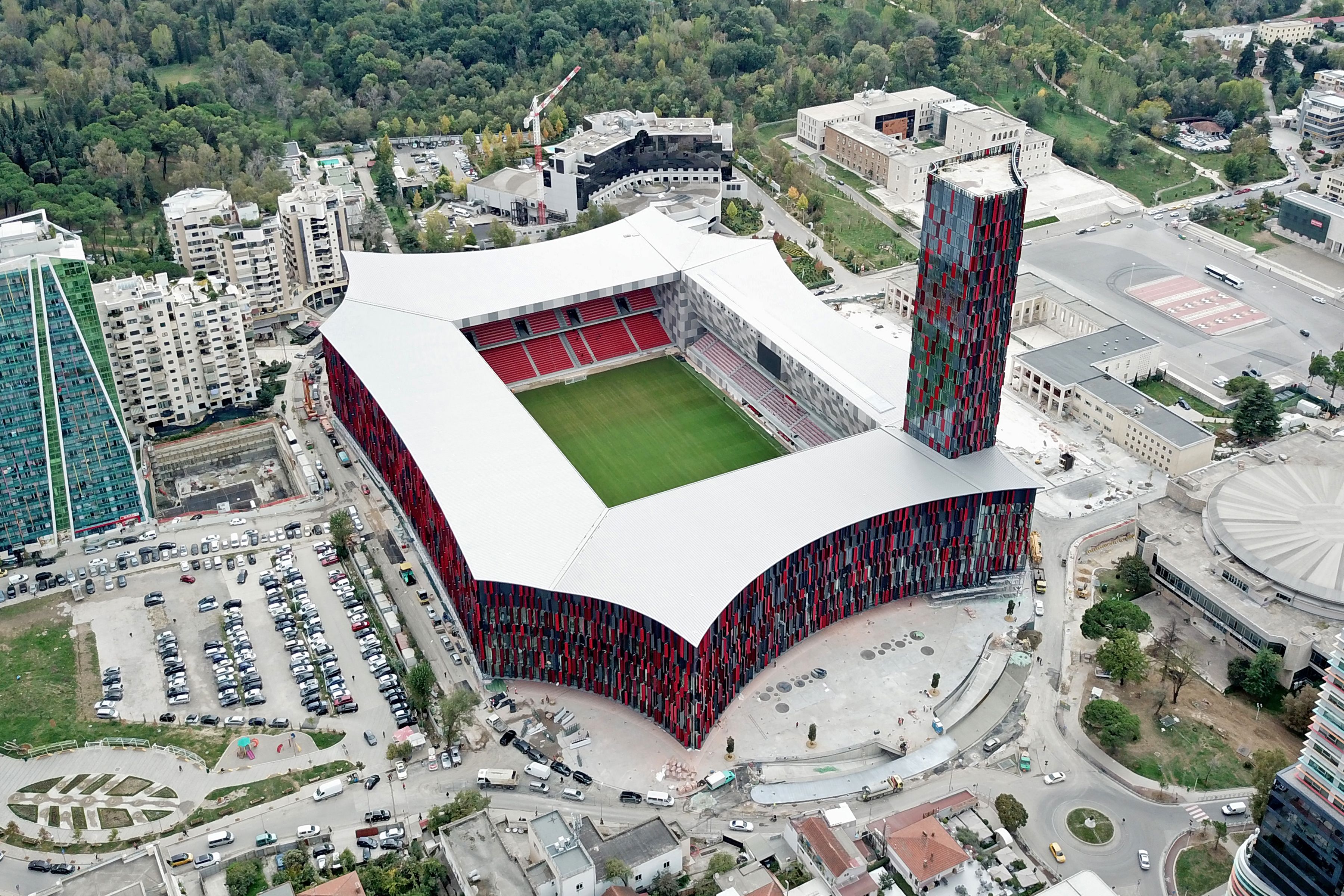“Football Stadiums Worth Visiting in Italy
Related Articles Football Stadiums Worth Visiting in Italy
Football Stadiums Worth Visiting in Italy

Italy, a land renowned for its rich history, artistic masterpieces, and delectable cuisine, also boasts a fervent passion for football. The nation’s football stadiums are more than just venues for sporting events; they are iconic landmarks that embody the spirit, culture, and history of Italian football. For football enthusiasts and travel aficionados alike, visiting these stadiums is an immersive experience that transcends the boundaries of the sport.
This article delves into the most captivating football stadiums in Italy, each with its unique story and allure. From the grandeur of San Siro to the historical significance of Stadio Olimpico, we’ll explore the architectural marvels, the electrifying atmospheres, and the unforgettable moments that make these stadiums must-visit destinations.
1. San Siro (Stadio Giuseppe Meazza), Milan
San Siro, officially known as Stadio Giuseppe Meazza, is an iconic stadium located in Milan, Italy. It is one of the largest and most famous stadiums in the world, with a seating capacity of over 75,000. San Siro is the home stadium of two of Italy’s most successful football clubs: AC Milan and Inter Milan.
History and Significance:
The stadium was built in 1926 and has undergone several renovations since then. It was named after Giuseppe Meazza, a legendary Italian footballer who played for both AC Milan and Inter Milan. San Siro has hosted numerous high-profile matches, including Champions League finals, Serie A title deciders, and international games.
Architectural Marvel:
San Siro is renowned for its distinctive architecture, characterized by its towering concrete pillars and spiraling ramps. The stadium’s design allows for excellent visibility from all seats, ensuring an immersive experience for spectators.
Atmosphere and Experience:
The atmosphere at San Siro is electrifying, especially during derby matches between AC Milan and Inter Milan. The stadium’s passionate fans create an unforgettable spectacle with their chants, songs, and displays of support.
Visiting San Siro:
Guided tours of San Siro are available, offering visitors a behind-the-scenes look at the stadium’s facilities, including the dressing rooms, players’ tunnel, and VIP areas. The San Siro Museum showcases the history of AC Milan and Inter Milan, with exhibits featuring trophies, memorabilia, and interactive displays.
2. Stadio Olimpico, Rome
Stadio Olimpico is a multi-purpose stadium located in Rome, Italy. It is the home stadium of two of Rome’s major football clubs: AS Roma and Lazio. The stadium has a seating capacity of over 72,000, making it one of the largest stadiums in Italy.
History and Significance:

Stadio Olimpico was originally built in 1937 and has been renovated several times since then. It hosted the 1960 Summer Olympics and the 1990 FIFA World Cup final. The stadium has also been the venue for numerous high-profile football matches, including Champions League finals and Serie A title deciders.
Architectural Marvel:
Stadio Olimpico is characterized by its classical design, with its grandstands and open-air layout. The stadium’s architecture reflects the rich history and culture of Rome, making it a unique and iconic landmark.
Atmosphere and Experience:
The atmosphere at Stadio Olimpico is passionate and intense, especially during derby matches between AS Roma and Lazio. The stadium’s fans are known for their vocal support and elaborate displays of choreography.
Visiting Stadio Olimpico:
Guided tours of Stadio Olimpico are available, offering visitors a glimpse into the stadium’s history and facilities. The tour includes access to the dressing rooms, players’ tunnel, and VIP areas.
3. Stadio Diego Armando Maradona, Naples
Stadio Diego Armando Maradona, formerly known as Stadio San Paolo, is a stadium located in Naples, Italy. It is the home stadium of Napoli, one of Italy’s most popular football clubs. The stadium has a seating capacity of over 60,000.
History and Significance:
The stadium was built in 1959 and renamed in 2020 in honor of Diego Armando Maradona, the legendary Argentine footballer who played for Napoli from 1984 to 1991 and led the team to their only two Serie A titles. Stadio Diego Armando Maradona is a symbol of Neapolitan pride and passion for football.
Atmosphere and Experience:
The atmosphere at Stadio Diego Armando Maradona is legendary, known for its intensity and passion. Napoli fans are among the most vocal and dedicated in Italy, creating an unforgettable experience for players and spectators alike.
Visiting Stadio Diego Armando Maradona:
Guided tours of Stadio Diego Armando Maradona are available, offering visitors a chance to explore the stadium’s history and facilities. The tour includes access to the dressing rooms, players’ tunnel, and VIP areas.
4. Allianz Stadium, Turin
Allianz Stadium, also known as Juventus Stadium, is a stadium located in Turin, Italy. It is the home stadium of Juventus, Italy’s most successful football club. The stadium has a seating capacity of over 41,000.
History and Significance:
Allianz Stadium was opened in 2011 and is one of the most modern and technologically advanced stadiums in Italy. It has hosted numerous high-profile matches, including Champions League finals and Serie A title deciders.
Architectural Marvel:
Allianz Stadium is characterized by its sleek and modern design, with its distinctive exterior and state-of-the-art facilities. The stadium’s design ensures excellent visibility from all seats, creating an immersive experience for spectators.
Atmosphere and Experience:
The atmosphere at Allianz Stadium is passionate and supportive, with Juventus fans creating a vibrant and energetic atmosphere. The stadium’s modern facilities and comfortable seating enhance the overall experience for spectators.
Visiting Allianz Stadium:
Guided tours of Allianz Stadium are available, offering visitors a behind-the-scenes look at the stadium’s facilities, including the dressing rooms, players’ tunnel, and VIP areas. The Juventus Museum showcases the history of Juventus, with exhibits featuring trophies, memorabilia, and interactive displays.
5. Stadio Artemio Franchi, Florence
Stadio Artemio Franchi is a stadium located in Florence, Italy. It is the home stadium of Fiorentina, one of Italy’s most historic football clubs. The stadium has a seating capacity of over 43,000.
History and Significance:
Stadio Artemio Franchi was built in 1931 and is named after Artemio Franchi, a former president of the Italian Football Federation. The stadium has hosted numerous high-profile matches, including World Cup matches and European Championship matches.
Architectural Marvel:
Stadio Artemio Franchi is characterized by its distinctive architecture, with its towering Marathon Tower and concrete structure. The stadium’s design reflects the modernist architectural style of the early 20th century.
Atmosphere and Experience:
The atmosphere at Stadio Artemio Franchi is passionate and vibrant, with Fiorentina fans creating a lively and energetic atmosphere. The stadium’s historical significance and unique architecture add to the overall experience for spectators.
Visiting Stadio Artemio Franchi:
Guided tours of Stadio Artemio Franchi are available, offering visitors a glimpse into the stadium’s history and architecture. The tour includes access to the dressing rooms, players’ tunnel, and VIP areas.
Tips for Visiting Football Stadiums in Italy:
- Purchase tickets in advance: Tickets for popular matches can sell out quickly, so it is advisable to purchase them in advance online or through official club channels.
- Arrive early: Arriving early allows you to soak in the atmosphere, explore the stadium, and avoid long queues.
- Be aware of security measures: Security measures at Italian football stadiums can be strict, so be sure to familiarize yourself with the rules and regulations before attending a match.
- Learn some basic Italian phrases: Knowing some basic Italian phrases can enhance your experience and help you communicate with locals.
- Respect the local culture: Football is a passionate and important part of Italian culture, so be respectful of the local customs and traditions.
Conclusion:
Visiting football stadiums in Italy is an unforgettable experience that combines the thrill of the sport with the rich history and culture of the country. From the grandeur of San Siro to the historical significance of Stadio Olimpico, each stadium offers a unique and captivating experience. Whether you’re a die-hard football fan or a travel enthusiast, exploring these iconic landmarks is a must-do for anyone visiting Italy. So, pack your bags, grab your tickets, and prepare to immerse yourself in the passion and excitement of Italian football.

